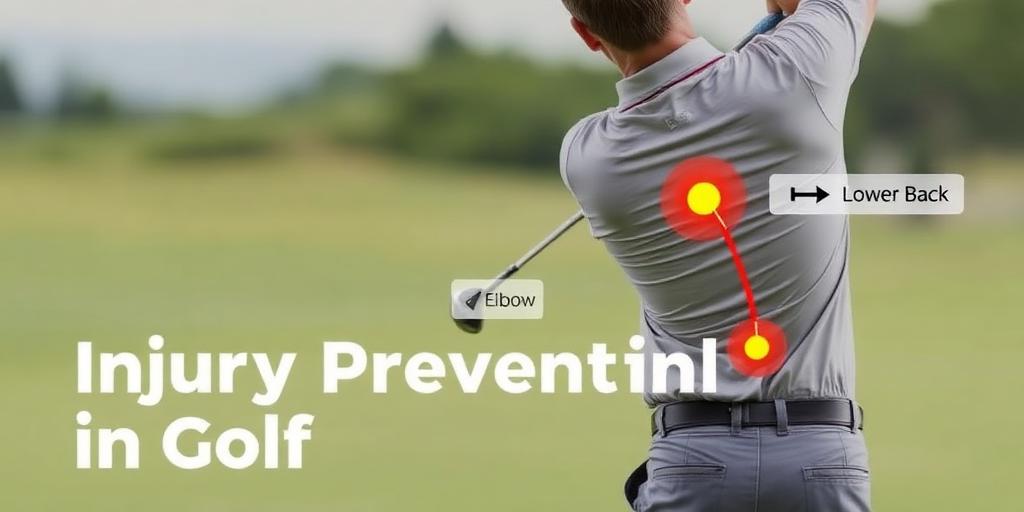Golf Injuries: How to Prevent Swinger's Elbow and Back Pain
Golf, a sport celebrated for its leisurely pace and strategic challenges, can unfortunately lead to a variety of injuries. The repetitive motions and forceful swings involved place considerable stress on the body, particularly the elbows and back. This article delves into the common golf-related injuries, specifically focusing on swinger's elbow and back pain, and provides practical strategies for prevention.
Understanding Swinger's Elbow (Medial Epicondylitis)
Swinger's elbow, also known as medial epicondylitis, is a condition characterized by pain on the inner side of the elbow. It's caused by overuse and repetitive motions that strain the tendons connecting the forearm muscles to the elbow. In golf, the forceful impact and repetitive nature of the swing can exacerbate this condition.
Symptoms of Swinger's Elbow:
- Pain and tenderness on the inner side of the elbow
- Pain that radiates down the forearm
- Weakness in the wrist and hand
- Stiffness in the elbow
Preventing Swinger's Elbow:
- Proper Warm-Up: Before each round, perform a thorough warm-up to prepare your muscles and tendons for the stresses of the golf swing. Focus on stretching the forearm muscles and gradually increasing the intensity of your swings.
- Correct Swing Technique: Ensure your swing technique is mechanically sound. Consider working with a golf professional to identify and correct any flaws that may be placing undue stress on your elbow.
- Grip Strength and Size: Use a grip size that is appropriate for your hand. A grip that is too small or too large can lead to excessive gripping force, increasing the risk of elbow strain. Also, avoid gripping the club too tightly. A relaxed grip allows for a smoother swing and reduces stress on the joints.
- Strengthening Exercises: Incorporate exercises to strengthen the forearm muscles. Examples include wrist curls, reverse wrist curls, and forearm pronation/supination exercises. Stronger muscles are more resilient to strain.
- Equipment Considerations: Ensure your equipment is properly fitted and in good condition. Worn-out grips or improperly fitted clubs can contribute to poor swing mechanics and increased risk of injury.
Addressing Back Pain in Golfers
Back pain is another common complaint among golfers. The golf swing involves a complex series of movements that place significant stress on the spine, particularly the lower back.
Causes of Back Pain in Golfers:
- Repetitive twisting and bending motions
- Poor posture and swing mechanics
- Inadequate core strength
- Muscle imbalances
Preventing Back Pain:
- Core Strengthening Exercises: A strong core is essential for stabilizing the spine and supporting the golf swing. Exercises like planks, bridges, and rotational exercises can help strengthen the core muscles.
- Flexibility and Stretching: Maintain good flexibility in the spine and hips. Stretching exercises that target the back, hamstrings, and hip flexors can improve range of motion and reduce strain on the back.
- Proper Posture: Maintain good posture both on and off the course. Avoid slouching and ensure your spine is properly aligned during the golf swing.
- Swing Mechanics: Work with a golf instructor to refine your swing mechanics and reduce unnecessary stress on your back. A smooth, controlled swing is less likely to cause injury than a jerky, forceful one.
- Warm-Up and Cool-Down: Always warm up before playing and cool down afterward. This helps prepare your muscles for activity and promotes recovery.
- Listen to Your Body: Pay attention to any pain or discomfort you experience and address it promptly. Ignoring pain can lead to more serious injuries.
Additional Tips for Injury Prevention
- Stay Hydrated: Dehydration can lead to muscle cramps and fatigue, increasing the risk of injury.
- Proper Nutrition: A balanced diet supports muscle health and recovery.
- Rest and Recovery: Allow your body adequate time to rest and recover between rounds of golf.
By understanding the causes of common golf injuries and implementing preventative strategies, golfers can enjoy the game while minimizing the risk of pain and injury. Remember to prioritize proper warm-up, swing technique, and physical conditioning to stay healthy and perform your best on the course.









